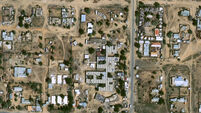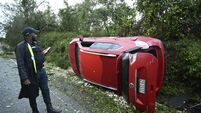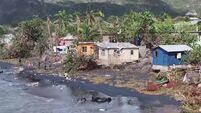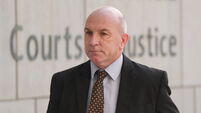Mine rescuers find no signs of life
The massive rescue effort to find six coal miners caught in a cave-in took a disheartening turn when a narrow hole drilled more than 1,800ft into the earth yielded no sounds of life and barely any oxygen.
The drill entered an area where the miners were thought to be working at the time of Monday’s collapse near Huntingdon, Utah. Mine chiefs had earlier thought their drill had simply hit a sealed, abandoned area of the mine that had little oxygen.
Readings of air composition at the bore hole showed there was not enough oxygen to support life. But officials kept up hope, saying the miners may have fled to another area that could have more oxygen.
“It’s difficult to say. I’m not going to speculate,” Rob Moore, vice president of Murray Energy, a co-owner of the Crandall Canyon Mine, said early today.
Initial readings showing oxygen levels above 20% – a breathable atmosphere - were samples from the bore hole itself and not the mine, said Bob Murray, chief executive of Murray Energy. There was no sign of carbon dioxide to indicate the exhalations of people.
When the drill was raised a few feet to clear it from debris, the oxygen readings fell to just over 7% and have remained there, said Richard Stickler, head of the Mine Safety and Health Administration.
“Normal oxygen is 21%,” he said. “Once you get down to 15% you start having effects, and at seven and a half per cent, it would not support life very long.”
Mine officials said the drill drifted on its long descent through the hard sandstone and speculated that it had penetrated an old, sealed-off work area, where low oxygen levels would be expected.
Further measurements showed the drill actually hit an active mining section.
A second, wider hole being drilled into the same area of the mine had come within about 240 feet of breaking through as of last night. When it does, rescuers will drop down audio and visual equipment that could pick up signs of life. The 1,886ft hole would also be big enough to send down food and water, Stickler said.
Separately, rescuers tried to make their way horizontally towards the miners, struggling to remove the rubble from the mine shaft. But it could take another week to reach the men and bring them out.
The mother of missing miner Don Erickson refused to be discouraged.
“We keep getting these other bits and pieces that are encouraging, so we’re going to hold onto that for now,” said the 69-year-old woman, who asked that her name not be used.
Around Huntington, a rugged town of around 2,000, the men’s plight evoked a similar, understated reaction, reflecting perhaps the stoicism of a community well-acquainted with the risks of digging coal deep below the earth’s surface.
The six-man mining crew was a ragtag combination of personalities – long-time residents and recent Mexican immigrants; grizzled veteran miners and a rookie who had put in just weeks on the job; a “bullheaded” older guy and a “sweet, sweet” young man.
The mining company has not identified the miners, but according to family, friends and other sources they are Carlos Payan, in his 20s; Kerry Allred, 57; Manuel Sanchez, 41; Brandon Phillips, 24; Luis Hernandez; and Erickson, 50.













